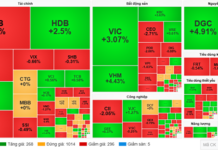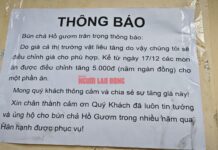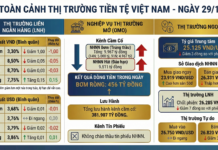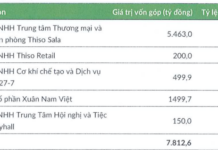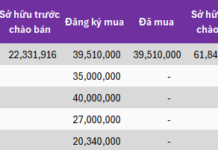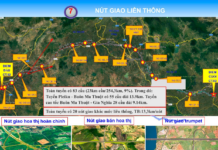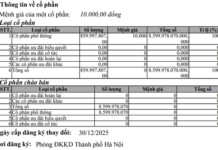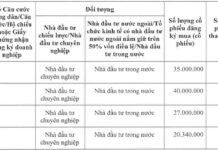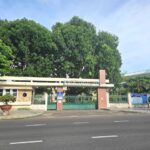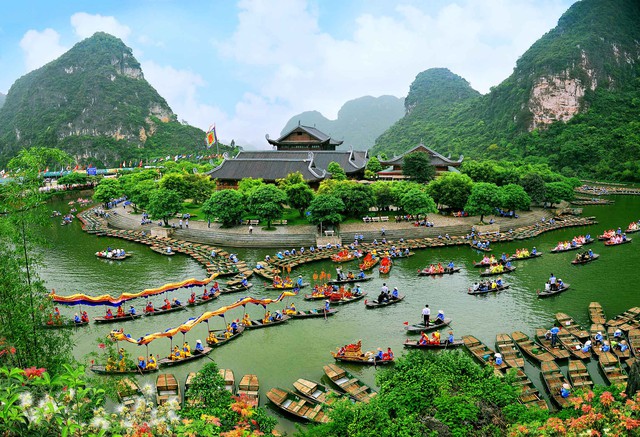
Ninh Binh is the sixth smallest province in Vietnam, with an area of 1,387km2. It is bordered by Ha Nam province to the north, Nam Dinh province to the east, Thanh Hoa province and the East Sea to the south, and Hoa Binh province to the west. On April 7, 2023, the Ninh Binh Department of Tourism announced that Forbes (USA) has honored Ninh Binh as one of the 23 most amazing travel destinations in the world in 2023.
On March 4, Deputy Prime Minister Trần Hồng Hà signed a Decision approving the Provincial Development Plan of Ninh Binh for the 2021-2030 period, with a vision to 2050.
Accordingly, by 2030, Ninh Binh will become a relatively developed province, with high growth rates among provinces in the southern Red River Delta region, and is deemed to be a centrally controlled city fulfilling the criteria of a millennial urban heritage and a creative city. The province will also be one of the major centers with high brand value in terms of tourism, cultural industry, cultural heritage, and economic heritage of the country and the Southeast Asia region. It will become a leading modern automobile mechanical industry in the country, and will essentially form a comprehensive ecosystem for startup and innovation.
The average GRDP growth rate (at constant 2010 prices) during the 2021-2030 period is projected to reach 9.2%. The province strives to be one of the top 10 provinces and cities with the highest per capita income in the country.
By 2035, Ninh Binh will become a centrally controlled city; a major center with high brand value in terms of tourism, cultural industry, cultural heritage, and economic heritage of the country and Asia-Pacific region…
By 2050, Ninh Binh will become a centrally controlled city that is modern, intelligent, and distinctive, on par with world heritage cities and creative cities around the world. The province will have a high position and brand value in the UNESCO heritage network; it will be one of the leading localities in achieving the “zero” greenhouse gas emissions in Vietnam, and be exemplary in startup, innovation, and creative renovation.
Merger of Ninh Binh city and Hoa Lu district
Ninh Binh province is divided into three functional regions, which are integrated territorial regions. Specifically, the central region includes the Ninh Binh urban planning area (with the focus on Hoa Lu city – the merger of Ninh Binh city and Hoa Lu district) and Tam Diep city. This is a comprehensive functional area that plays the role of driving force for the province’s development, shaping the Ninh Binh urban area with the characteristics of a “Millennial Urban Heritage”.
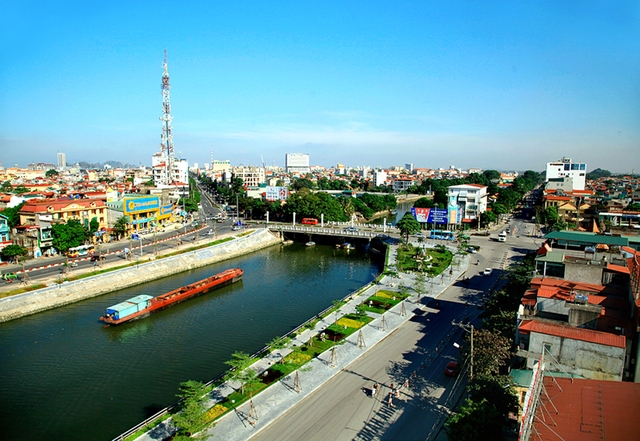
The Northwest region includes Nho Quan district and Gia Vien district. This is an area for developing eco-tourism, cultural tourism, rural areas… At the same time, it develops industries to become one of the major industrial centers in Ninh Binh province (in the Gian Khau area, Gia Vien district and the area adjacent to Tam Diep city of Nho Quan district).
The Southeast region includes Yen Mo district, Yen Khanh district, and Kim Son district. This is a key agricultural area of the province, associated with the development of coastal economic zone, urban area, coastal service, harmoniously connecting with the world heritage urban area and high-quality industrial and service area.
The province has 7 central cities. In particular, the province will plan to merge Ninh Binh city and Hoa Lu district into a province-controlled first-class urban area – the millennial urban heritage. After the merger, the area of Ninh Binh city will increase to more than 3 times, from 47km2 to 150km2.
The industrial and service city of Tam Diep is a second-class urban area. There are 5 fourth-class urban areas (Gia Vien district, Kim Son district, Nho Quan district, and expanded towns: Yen Ninh, Yen Thinh). There are 2 functional urban areas (Gian Khau, Binh Minh) and other urban areas established according to development needs.
Although it is the sixth smallest province in the country, Ninh Binh will in the future have 2 expressways; 8 national highways and a coastal road running through; 28 provincial roads and 08 connecting roads, and a system of terminals and ports.
In terms of railway, the province has the Hanoi – Ho Chi Minh City railway line; the North-South high-speed railway runs through; 3 dedicated railway lines; 5 railway stations; in addition, there are 15 domestic waterways at the local level ranging from grade VI to II.
Especially, according to the plan, the province will reserve land funds for developing a dedicated airport in Yen Khanh district and a dedicated airport serving tourism development in Nho Quan district.


